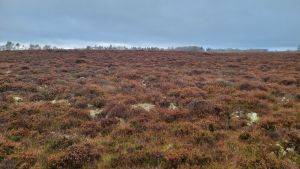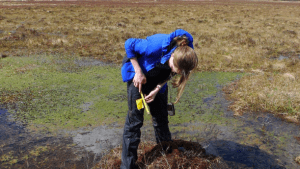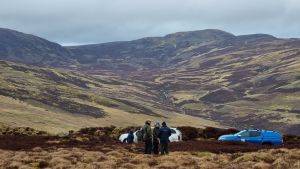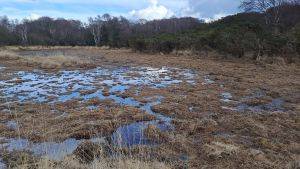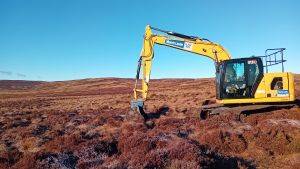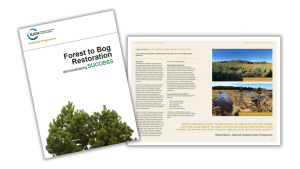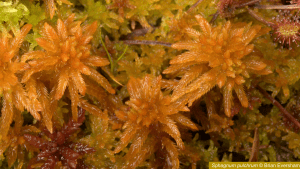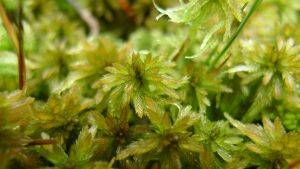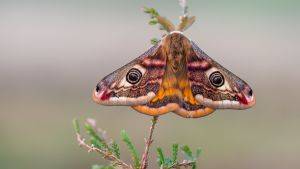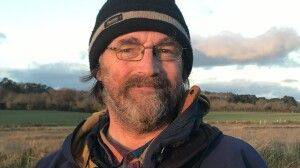In the late 1860s, a railway – the Solway Junction Railway (SJR) – was constructed across the ‘Moss’ of Bowness Common. Where it met the Solway Firth, it soared above the waves to Annan on the Scottish side, across the Solway Viaduct – a structure that was “light and elegant, and in the full tide [had] the semblance of a piece of enchanted workmanship resting on the bosom of the racing waters”.
 The Solway Mosses are some of the few remaining domes of raised mire in Britain, where the peat was sometimes 15 metres deep. Most of the Mosses have been degraded, to varying extents, by peat-harvesting, and are now being re-wetted, but Bowness Common SSSI is largely untouched except around its edges – and along the track of the SJR.
The Solway Mosses are some of the few remaining domes of raised mire in Britain, where the peat was sometimes 15 metres deep. Most of the Mosses have been degraded, to varying extents, by peat-harvesting, and are now being re-wetted, but Bowness Common SSSI is largely untouched except around its edges – and along the track of the SJR.
Nearly 40 years before the SJR was planned, George Stephenson had enormous difficulties constructing a railway across the boggy ground of Chat Moss, but this didn’t put off the Brogdens and their engineer James Brunlees when they planned the SJR. No matter that the track must cross 1.5 miles of peatbog and then the notoriously chaotic Solway – it would be finished within a couple of years and would, cheaply and quickly, carry West Cumbrian haematite to the furnaces of southern Scotland, avoiding the expensive dog-leg to Carlisle and Gretna.
But the peat of Bowness Common fought back. When work started, “Horses could not go upon it and, except in the height of summer, cattle could not even traverse it.”.
Navvies laboured for long periods over several years to cut longitudinal and cross-channels to drain the peat: “water ran in river-like streams” and the level of the peat dropped by 4-5 feet each side of the track. The navvies carted in 90,000 wooden faggots, to be laid in layers, and extra-long wooden sleepers. In 1869 “an engine was run along, but one fine morning the engine nearly disappeared. It sank down into the moss, and looked like bidding farewell to the scene of its labours; but fortunately for the contractors the steam was up, and the engine had strength enough to drag itself out of its perilous position”!
It wasn’t until the summer of 1870 that the Bowness Common stretch was passed as fit for passenger as well as freight traffic.
But during the next decade or so the ‘light and elegant’ structure of the viaduct suffered mishaps and disaster, the railway proved uneconomic, and was eventually closed in 1926.
In 1934 the track across the Common was dismantled.
Then, at the end of the last millenium, the RSPB and Natural England started to acquire the precious Common and began the programme of re-wetting that continues to this day.
I had long been intrigued by the ‘story’ of Bowness Common – a story which so few people know, of the 150 years of human intervention in this precious ‘Moss’ – and so my photographer collaborator James Smith and I, with the help of a grant from the Solway Wetlands Landscape Partnership and the Heritage Lottery Fund, set out to research and illustrate the stages in the damage and restoration of the peat.
This research took me to archives, websites, railway ‘chatrooms’, to the offices of the RSPB and Natural England – and on ‘expeditions’ along the stub of the embankment and across the boggy dome of the Common. James squelched through bogs and sent his drone off across the Common and the Firth, hoping that it would return with its own, visual, stories (it did).
And as a result, our website Crossing the Moss, www.crossingthemoss.wordpress.com, can now take you through the construction of the viaduct, and of the SJR across the peat; the disaster that befell the viaduct, and the eventual closure and dismantling of the viaduct and track – to the present-day, long-term restoration of one of the Solway’s raised mires and the surreal water-scape of the transformed track.
Ann Lingard (Ann Lackie) writes about the Solway Firth at www.solwayshorestories.co.uk and www.solwayshorewalker.wordpress.com: James Smith’s website is www.jamessmithphotography.com
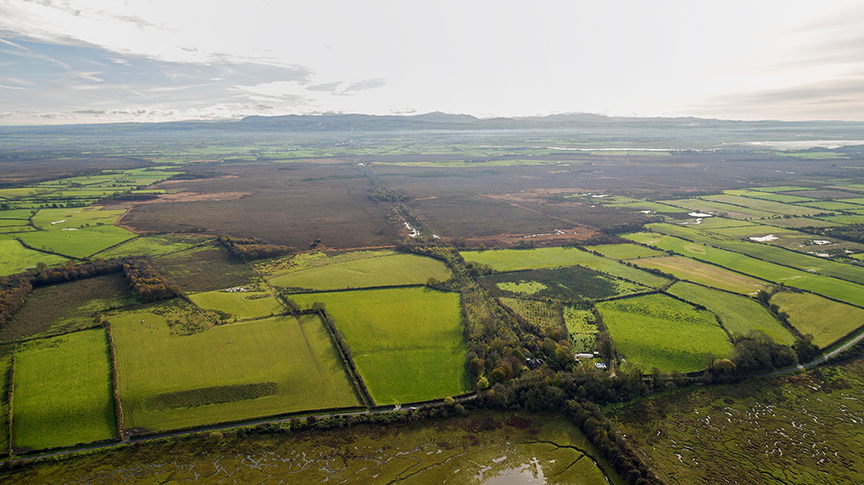
L-R: Looking South to the Common and the former railway track, from the saltmarshes of the Solway Firth - Credit James Smith; A dammed section of the railway track - Credit Ann Lingard
Submitted by Ann Lingard

